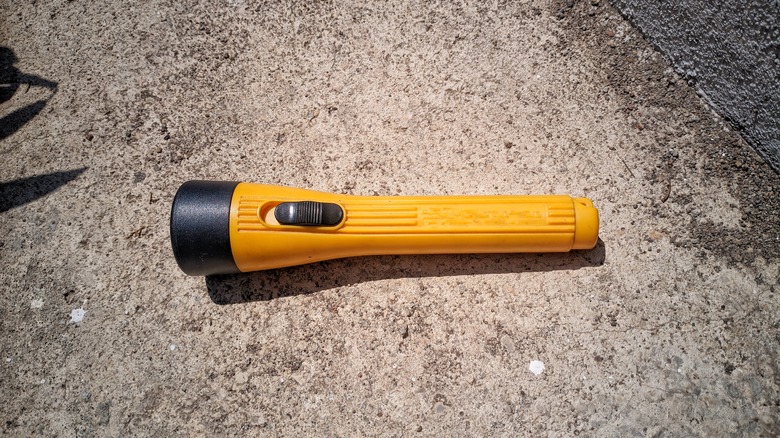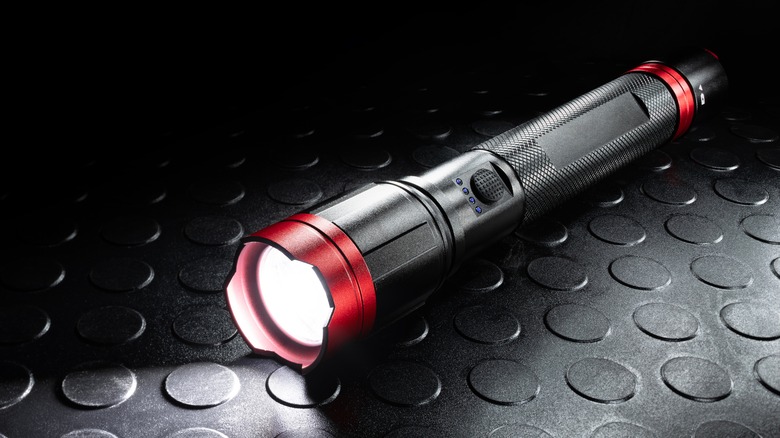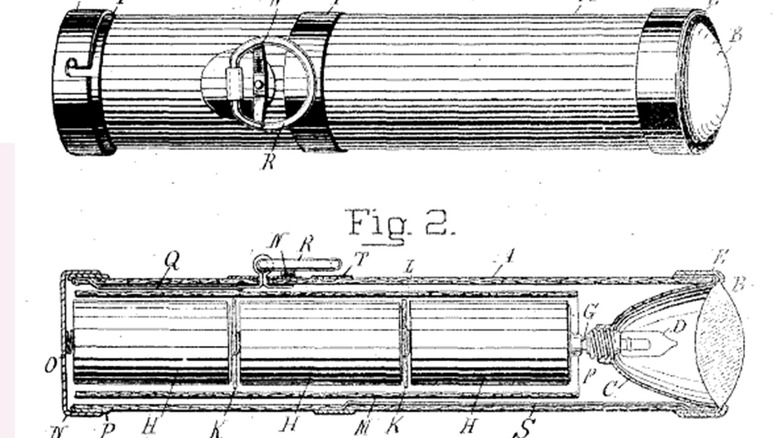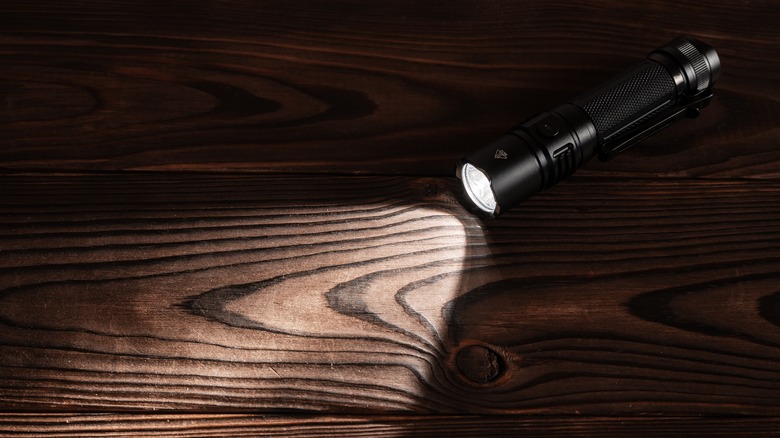Here's When Flashlights Were Invented And What Inspired Their Name
These days, flashlights are an everyday part of our lives simply by virtue of the fact we all have one in our pockets. But that little light on the back of our smartphones — so often used to find keys under the couch — belies the rich history of innovation and technological advancement across centuries that spawned the flashlight in the first place.
Before we all had a flashlight in our pockets, actual flashlight devices were much more widespread and were a significant technology in their own right. We've all made a potato flashlight project at school and surely remember holding flashlights for our dads as they tried to repair some sort of household item with barely concealed rage. Flashlights can even help check your refrigerator's efficiency.
Portable light sources of this kind have been a part of modern life for decades, and were nothing short of revolutionary when they first debuted, utilizing then-leading-edge technology to provide users with handy gadgets that became a mainstay of everyday living. So, when exactly did this groundbreaking tech first come into use? And why the "flash" aspect of the name? Join us as we illuminate the history of the flashlight.
Flashlights were invented at the turn of the 19th century
While antecedents of the flashlight can be found throughout history — from clay and stone lamps and lanterns to good old torches that were essentially just fire on a stick — the first real flashlight was actually invented at the end of the 19th Century. Though the first electric arc lamp was invented by Sir Humphry Davy in the early 1800s, this particular device was too large to be a portable light source, and it would be almost a hundred years before the first true example of a flashlight arrived.
It was Russian-American businessman Conrad Hubert (formerly known as Akiba Horowitz) who ultimately ushered the first flashlight to market, but it was his employee David Misell who actually invented it. Hubert tasked the British inventor Misell, who was working out of his New York workshop, with creating a portable light that could fit inside consumers' pockets, and by 1898, Hubert had a working prototype, signaling the birth of the flashlight.
How did the very first flashlight work?
On January 10, 1899, David Misell was granted a patent for his newly invented flashlight. The patent rights were assigned to the American Electrical Novelty and Manufacturing Company, which was owned by Conrad Hubert and eventually became the American Ever Ready Company. The device was essentially a paper and fiber tube that used D zinc batteries arranged in a front-to-back layout inside, with a light bulb and brass reflector sitting at the end of the design.
Hubert and Misell were only able to create their revolutionary device due to the recent invention of two other major technologies: consumer versions of dry cell batteries and the electric light. The former had been invented in the mid-1800s and used electrolytes suspended in paste instead of liquid, making it ideal for portable devices as the paste would not spill when it was used at certain angles. Further improvement to the battery design led to the first commercially available tubular dry cell batteries in 1896. An incandescent electric light capable of lasting for long periods was invented by Thomas Edison in 1879, and a small version of his design provided the perfect light source for the flashlight.
Why are they called flashlights?
Portable light sources were revolutionary when they first debuted, and not just for consumers. Conrad Hubert donated several of his new inventions to the New York City Police Department, mostly as a promotional exercise so he could use the officers' testimonials in advertisements. But flashlights proved hugely useful to the force who gave the devices glowing — if you'll excuse the pun — reviews. The flashlight joined the ongoing worldwide illumination of cities, which were being transformed from their pre-electricity days.
Of course, these early iterations of flashlights came with many limitations — the biggest implied by the name itself. The very first flashlights could only produce quick flashes of light. This was because of the carbon-filament bulbs, which were very inefficient and required resting periods between use in order to maintain their integrity, and the batteries themselves could only maintain a steady current for brief periods. This all resulted in the portable lights flashing rather than providing a steady source, hence the name, flashlight.



